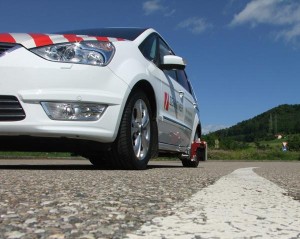The road signs and markings used on airport runways must provide optimized visibility to ensure safety in an extremely challenging environment.
On our roadways, road signs and markings are acknowledged to play an essential role in traffic management and safety. The same can be said for airfields, where these signs and markings provide guidance for pilots when an aircraft is coming in to land or taxiing, as well as for all ground vehicles. Security on airfields is dependent on many factors and a good maintenance strategy is required.

The ZDR 6020 Dynamic Retroreflectometer RL can be used for all types of road and airport markings at normal traffic speed without obstructing the traffic
The visibility of signs, especially at night, should meet the relevant national and international standards, and they should be checked regularly as part of the maintenance procedure. Markings in the maneuvering area have to fulfill the requirements of the International Civil Aviation Organization (ICAO). Moreover, airport markings often have to fulfill different requirements that are more strict than those for other road markings.
The New Zealand Roadmarkers Federation Roadmarking Materials Guide, for example, specifies that special high-index airport beads must have a bigger diameter and a higher refractive index than those used on roads. In any case, many of these local standards are at least partially based on EN 1436, the European standard for road marking performance for road users.
As airport road markings are also subjected to wear and tear, a policy is required to guarantee that maintenance is carried out at the appropriate time. To ensure that the markings are visible and that they support safe ground traffic, measuring equipment is required. An intelligent maintenance strategy is based on measuring values and is supported by advanced evaluation software.

Zehntner’s “MappingTools” showing ZDR 6020 RL measurements of road markings
